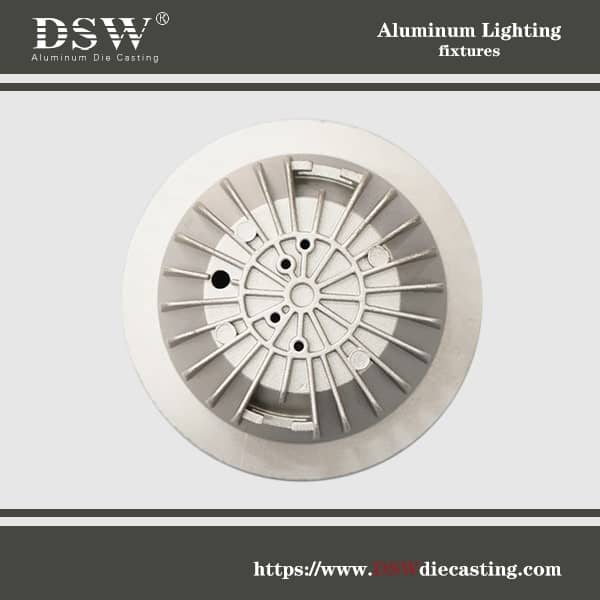Yield Strength of Aluminum Alloys
Introduction
Aluminium alloys are essential in various industries due to their lightweight, corrosion resistance, and excellent mechanical properties. Aluminum alloys Yield strength and Tensile Strength are crucial mechanical properties that determine how much load an aluminium alloy can withstand before undergoing permanent deformation. This article explores the yield strength of various aluminium alloys, highlighting their significance in engineering applications.
What Are Yield Strength and Tensile Strength?
Yield Strength is the maximum stress an alloy can withstand without undergoing permanent deformation. It indicates the point at which a material begins to deform plastically, meaning that any load beyond this point will cause irreversible changes in its shape.
Tensile Strength, on the other hand, measures the maximum amount of tensile (pulling) stress that a material can withstand before failure. It reflects the material’s ability to resist breaking under tension.
Both yield strength and tensile strength are crucial for engineers and designers when selecting materials for load-bearing applications.
Importance of Yield Strength
The aluminum alloys yield strength is vital for assessing their capability to endure pressure, force, or load. A higher yield strength value indicates greater load-carrying capacity, making it critical for applications where structural integrity is paramount. For instance, pure aluminium has a yield strength of approximately 30 MPa (4 ksi), whereas high-strength aluminium alloys can exceed 425 MPa (61.6 ksi).
Yield Strength of Aluminum Alloys
This table presents the yield strength values for various aluminum alloys, including their temper designations and corresponding strengths in both megapascals (MPa) and kilopounds per square inch (ksi).
| Aluminum Alloy | Temper Designation | Yield Strength (MPa) | Yield Strength (ksi) | Tensile Strength (MPa) | Tensile Strength (ksi) |
| 1100 | H12 | 76 | 11 | 125 | 18.3 |
| 2014 | T6 | 400 | 58 | 480 | 70 |
| 2017 | T4 | 221 | 32 | 310 | 45 |
| 2024 | T3 | 290 | 42 | 450 | 65 |
| 2024 | T4 | 276 | 40 | 430 | 62 |
| 2025 | T6 | 228 | 33 | 310 | 45 |
| 2124 | T851 | 393 | 57 | 450 | 65 |
| 2219 | T62 | 248 | 36 | 290 | 42 |
| 2618 | T61 | 290 | 42 | 380 | 55 |
| 3003 | H18 | 172 | 25 | 200 | 29 |
| A304 | – | 172 | 25 | 200 | 29 |
| 354 | T61 | 248 | 36 | 300 | 43.5 |
| 355 | T51 | 152 | 22 | 230 | 33 |
| 355 | T6 | 159 | 23 | 270 | 39.2 |
| 356 | T7 | 145 | 21 | 230 | 33 |
| 356 | T6 | 138 | 20 | 210 | 30.5 |
| A356 | T61 | 193 | 28 | 260 | 37.5 |
| A360 | – | 170 | 25 | 220 | 31.9 |
| 5052 | H32 | 159 | 23 | 250 | 36.3 |
| 5056 | H38 | 345 | 50 | 410 | 59.5 |
| 6061 | T4 | 110 | 16 | 240 | 34.8 |
| 6061 | T6 | 241 | 35 | 310 | 44.9 |
| 6062 | T4 | 110 | 16 | 240 | 34.8 |
| 6062 | T6 | 241 | 35 | 310 | 44.9 |
| 6063 | T42 | 69 | 10 | 150 | 21.8 |
| 6063 | T5 | 110 | 16 | 240 | 34.8 |
| 6063 | T6 | 172 | 25 | 260 | 37.7 |
| 7050 | T74 | 414 | 60 | 570 | 82.7 |
| 7075 | T6 | 483 | 70 | 570 | 82.7 |
| AlSi12 | – | 145 | 21 | 200 | 29 |
| AlSi9Cu3 | – | 160 | 23 | 220 | 31.9 |
Notes:
Yield strength values are temperature-dependent and may vary based on specific working conditions.
The temper designation indicates the specific thermal or mechanical treatment that the alloy has undergone.
Importance of Yield Strength and Tensile Strength in Aluminum Alloys
Aluminum alloys are often chosen for their high strength-to-weight ratio, making them ideal for applications where reducing weight is critical, such as in aerospace, automotive, and construction.
- Structural Integrity: High yield strength ensures that aluminum components can support loads without permanent deformation, which is vital for safety in structural applications.
- Durability: High tensile strength allows aluminum alloys to endure significant stress before breaking, enhancing the longevity of products made from these materials.
- Design Flexibility: The availability of various aluminum alloys with different yield and tensile strengths enables engineers to select materials tailored to specific performance requirements.
Factors Affecting the Yield Strength of Aluminum Alloys
Yield strength is a critical mechanical property of aluminum alloys, influencing their suitability for various applications. Several factors contribute to the yield strength, making it essential to understand these elements for effective material selection.
- Alloy Composition
The specific elements added to aluminum alloys—such as copper, magnesium, manganese, silicon, and zinc—significantly impact their mechanical properties. For instance, copper can enhance yield strength but may reduce corrosion resistance, making it a trade-off for engineers. - Heat Treatment
Heat treatment processes like solution heat treatment, aging, and quenching can dramatically improve yield strength. These processes alter the microstructure of the alloy, facilitating the formation of precipitates that enhance strength. - Temper Designation
The temper designation indicates the specific treatment an alloy has undergone. For example, T6 denotes that the alloy has been solution heat-treated and artificially aged, resulting in higher yield strength compared to its non-treated counterparts. - Grain Structure
The size and distribution of grains within the alloy play a crucial role in determining yield strength. Finer grains can improve strength through grain boundary strengthening, where dislocations are impeded by the grain boundaries. - Cold Working
Mechanical deformation processes, such as rolling and extruding, can increase yield strength through strain hardening. This occurs as dislocations accumulate within the material, making further deformation more difficult. - Temperature
Yield strength is temperature-dependent. Generally, as temperature increases, yield strength decreases. Understanding the operational environment is essential for selecting the appropriate alloy. - Impurities and Defects
The presence of impurities or structural defects can weaken the alloy. High-quality processing minimizes these issues, leading to enhanced yield strength.
In aluminium die casting, the connections between these factors and yield strength highlight the complexity of the casting process. Engineers must carefully consider alloy composition, process parameters, and post-casting treatments to optimize yield strength and ensure the structural integrity of the final product. Proper management of these factors leads to high-performance components suitable for various demanding applications.
Applications of Aluminum Yield Strength
Aluminum yield strength is critical in high-strength engineering applications, but alloys with lower yield strengths also serve vital functions across various industries. Engineers must consider yield strength when designing structures or components subjected to high loads. Stronger alloys can reduce overall costs and complexity while providing the necessary strength.
Conclusion
At DSW, we specialize in aluminium die casting alloys, ensuring that our products meet the required yield strength specifications for your projects. With over a decade of experience, our experts are ready to provide tailored solutions for your aluminum needs. Contact us today for expert guidance and support.














No comment